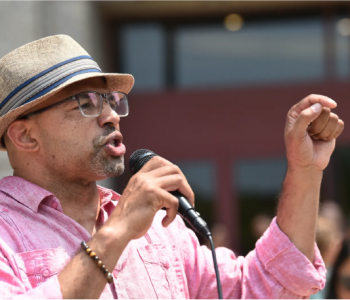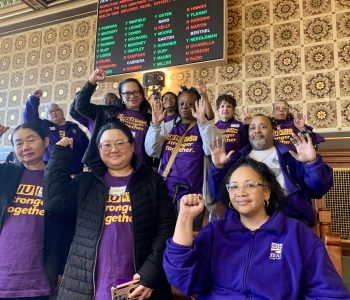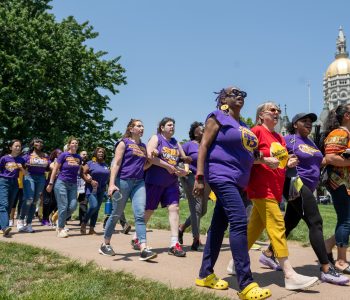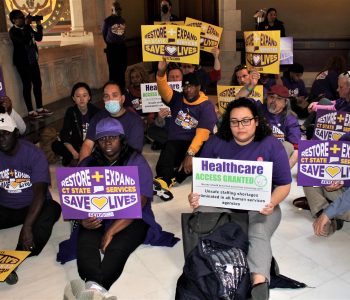
Andrew John Puglisi’s group home is off a side street in Newington, just five minutes from where he grew up. On a recent day, as holiday decorations were going up around town, a radio played quietly in another room. Puglisi was sitting at a table, moving small, colorful blocks around. He stacks. He unstacks. It calms him. Because the blocks are spongy, he can also throw them, though that’s not encouraged.
He’s calm now, in this, his third home since August 2017.
And here’s the irony: Change is difficult for Puglisi, 54, who has cortical blindness, epilepsy, behavior disorder and cerebral palsy. Change agitates him. He acts out and then he is moved to a new facility, which agitates him, and so on.
It’s a cycle that’s repeated all too frequently around the state, particularly with older residents such as Puglisi.
There is a steep cliff off of which families with developmentally disabled members are pushed once their loved ones reach a certain age. Successful day programs lose funding and close, and people who’d benefited from them are pushed back into the community. Group homes lose funding and close, and people for whom that facility had been home — people who’d bonded with the workers there — are dispersed into other group homes that may not offer precisely what that person needs.
Puglisi moved to this Newington home the week of Thanksgiving. He says he likes it here and he’s making friends, as he’s done in the other facilities. Puglisi has encyclopedic-recall for former housemates, case workers and nurses he’s met along the way.
As one advocate said: Puglisi is lucky. He has his mother, Lois Nitch, who has tirelessly fought for what’s best for her son. During his most recent housing crisis, she even had a sit-down with the commissioner of the Department of Developmental Services, Jordan A. Scheff.
But why should this be a fight?
Responding to a deep need for reform, in the 1980s and ‘90s, the state began closing state institutions such as Mansfield Training School and Hospital. Some former residents moved into group homes in communities around the state. But there wasn’t nearly enough space in group homes for everyone, and people left standing when the music stopped went to the streets, and Connecticut’s homeless population skyrocketed.
For 18 years, Puglisi lived in a Southbury group home that was run by Oak Hill, Inc., and Connecticut Institute for the Blind. Nitch said that when the state stopped funding that home, Puglisi was moved to a home in East Hartland. That placement didn’t take. He moved again. Puglisi had a contract job in Torrington that gave him a sense of purpose. That program, too, is long gone, said Nitch.
This is just a partial list. Each transition means another environment for Puglisi to get used to, and (potentially) more outbursts.
Puglisi spent Christmas Day in the hospital, after an unexplained stomach ailment. He told his mother he was sad, and that he didn’t understand what was happening to his body. In the next few weeks, he faces multiple doctor visits — neurologist, psychiatrist, gastrologist, and primary care, Nitch said. Still, he managed to give his mother beautiful gold earrings for Christmas that the staff said he picked out himself.
The challenges can push families like Puglisi’s to the brink, especially if that family doesn’t have a lot of money. Nitch tells a story about one father who’d exhausted all his resources, took his adult child with disabilities to a local hospital emergency department and left that adult there. He then sat in the parking lot and sobbed.
There needs to be a plan for uninterrupted care for people like Puglisi, plans that won’t be blown apart by the vagaries of political winds. If you can judge a society by how it treats its most vulnerable members, we are falling far, far short.
“I don’t see any plans in place or even discussions as to where our priorities are going to lie,” said Nitch. “It was like the Hatfields and McCoys, state and nonprofits. We get nowhere if we cannot come together.”







